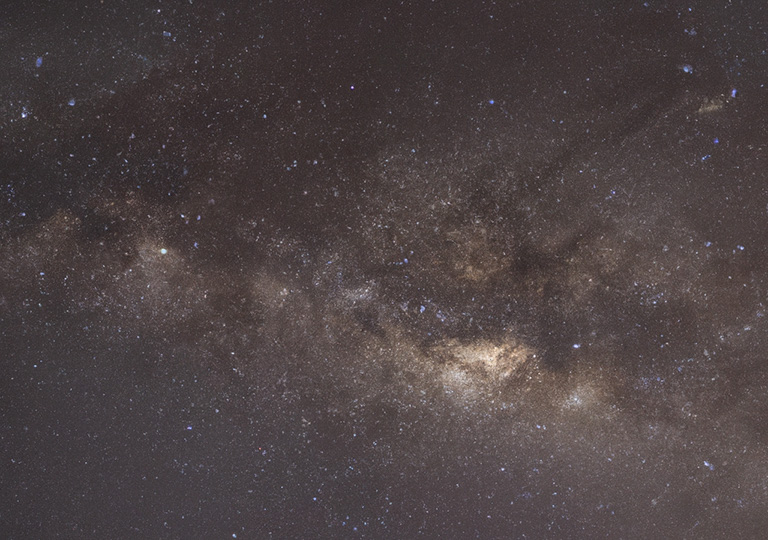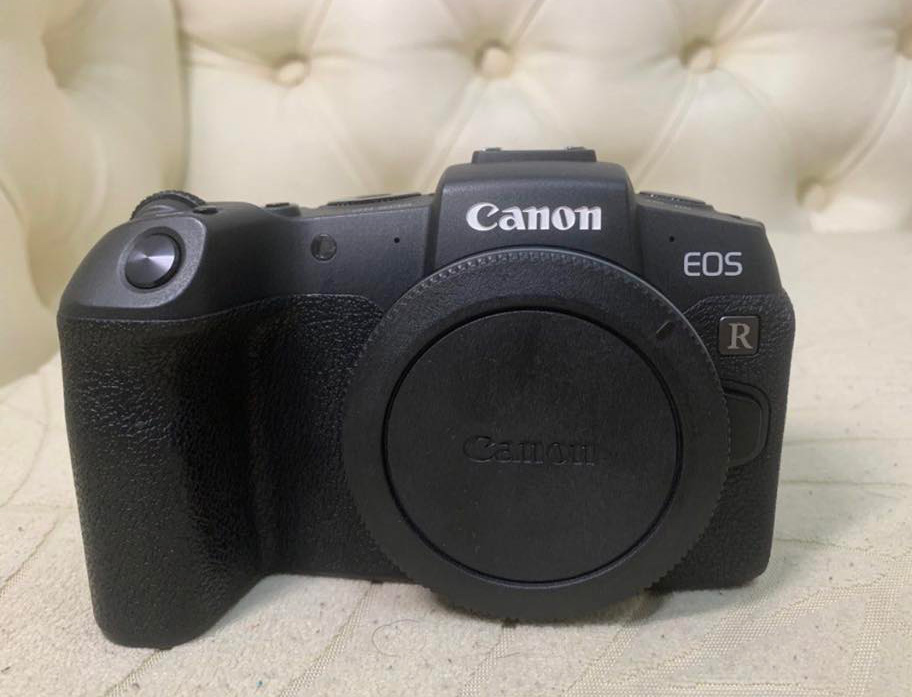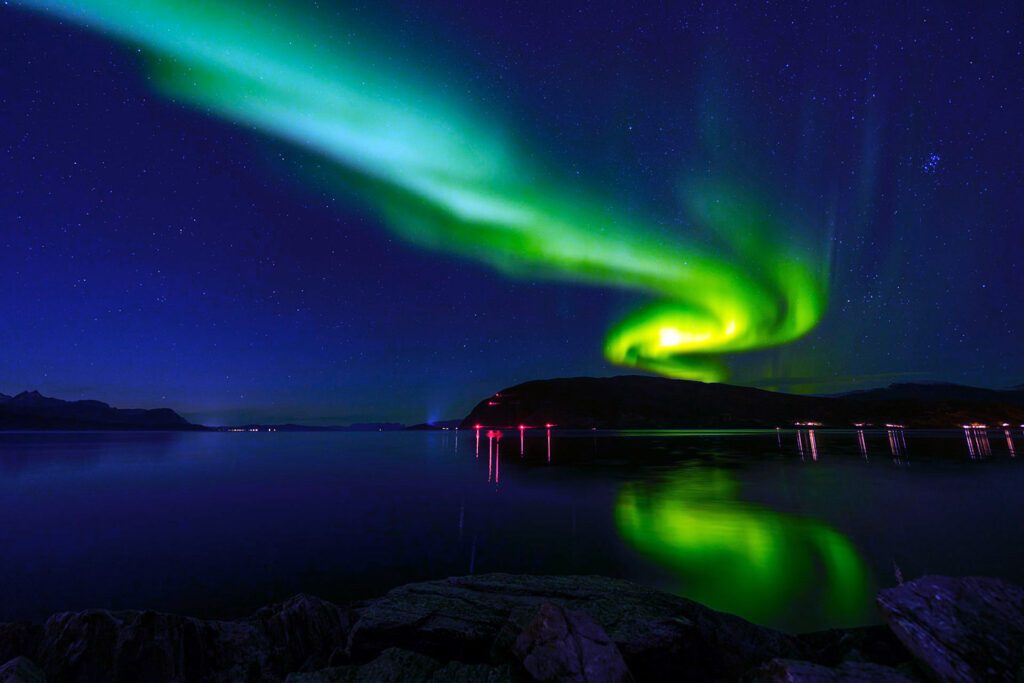Yes, the Canon EOS RP is a good camera for astrophotography, with various capabilities that make it ideal for photographing the night sky. Here’s a list of the main features for astrophotography I have encountered:
- Full-Frame Sensor: The EOS RP has a full-frame sensor, allowing it to capture more details and perform better in low-light conditions, which is essential for astrophotography.
- Compact and Lightweight: Because of its compact size and weight, it is an ideal option for astrophotographers who may need to travel to various sites or trek to locate the best position to capture the night sky.
- Focus Bracketing and Intervalometer: These capabilities may let you capture a series of photographs with varying focus points or create time-lapse sequences, both of which are important in astrophotography.
- Vari-Angle LCD Screen: The Vari-Angle LCD screen allows for variable orientation, making it simpler to frame images, particularly when the camera is placed on a tripod at different angles.
- Similar Sensor to Canon 6D Mark II: The EOS RP has the same sensor as the Canon 6D Mark II, a camera recommended for astrophotography, implying similar performance while photographing celestial views.
- User-Friendly Interface: The camera’s well-organized menu and simple operation make it suitable for both beginners and expert photographers wishing to explore astrophotography.
- Astrophotography Settings: The camera has manual settings for astrophotography, such as bulb mode, wide aperture choices, high ISO capability, RAW recording, and manual focusing.
- Battery Life: Although the battery life is not the longest, it should be enough for most night sky photography sessions. Extra batteries are recommended for longer sessions.
Canon EOS RP Full Frame Mirrorless Vlogging Portable Digital Camera with 26.2MP Full-Frame CMOS Sensor, Wi-Fi, Bluetooth, 4K Video Recording and 3.0” Vari-angle Touch LCD Screen, Body, Black,
Features
- Lightest, smallest full-frame EOS camera
- RF mount compatible with RF lenses and EF/EF-S lenses with optional mount adapter
- High image quality with 26.2 Megapixel Full-frame CMOS Sensor and DIGIC 8 Image processor
- Dual pixel CMOS AF for fast and accurate auto focus
- Use the EOS Utility Webcam Beta Software (Mac and Windows) to turn your Canon camera into a high-quality webcam, or do the same using a clean HDMI output.
These are some of the photos I have personally shot:


Due to the fact that its sensor is similar to the one found in the Canon 6D Mark II, you may expect results that are equal.
One of the cameras that Roger Clark recommends for use in astronomical photography is the Canon 6D Mark II, which may be found on his website. Because of this, I am able to say with absolute certainty that the Canon EOS RP will provide the same level of performance in a substantially more compact form factor.
In a similar vein, the Canon EOS RP is a fast and simple camera to use. The menu is really nicely arranged, and it is not difficult to understand what you are supposed to be doing.
All of the main settings are accessible, in addition to a few extra options for those individuals who are interested in expressing their creativity via their astrophotography.

A weather sealing feature is something that I wish Canon had included with the RP. The fact that this is the case indicates that I will need to exercise a higher level of care while using this camera in a challenging setting, such as when it is raining or snowing outside.
Taking everything into consideration, the Canon EOS RP is an outstanding choice for astronomical photography if you are looking for a mirrorless camera that is not only tiny but also lightweight and capable.
Canon EOS RP astrophotography settings
Astrophotography can be quite challenging because it requires a lot of manual settings. However, the Canon EOS RP is capable of capturing some amazing images if you know what you’re doing.
Transitioning from daytime to nocturnal photography necessitates particular adjustments. In my personal experience these are the optimal settings on your camera for astrophotography:
- A proficiency in manual mode is essential for astrophotography, as all other modes are deemed unsuitable for this purpose.
- Advantages of the RAW Format: Configure your camera to save images in RAW format. Uncompressed raw files offer a substantial amount of data and considerable flexibility for post-processing modifications.
- Lens Fundamentals: Disable the stabilizer and autofocus functions of the lens when employing it, as they are superfluous for the purpose of astrophotography.
- Aperture adjustment involves minimizing the lens’s wide-open position in order to prevent the star distortion that is frequently observed in the majority of lenses when set to their maximum aperture.
- Disabling peripheral illumination correction in the settings will result in distortions that can subsequently be rectified through post-processing.
- Caution Regarding Noise Reduction: To preserve the integrity of the image, disable extended exposure noise reduction and high-speed noise reduction.
- Optimal ISO Selection: Configure the ISO setting in accordance with the specifications of your camera. To identify the optimal ISO for your camera, consult the user manual or the link supplied. For instance, 1600 may be the optimal ISO setting for an EOS 1100D.
- Implementing an intervalometer in conjunction with bulb mode can effectively reduce camera motion that may occur during extended exposures.
After implementing these modifications, your DSLR is now astrophotographer-optimized. I really hope these also work for you.
One of my example picture with these setting.

How do you take a picture of the night sky on Canon EOS RP?
It’s important that you have a sturdy tripod with you when you’re capturing the night sky. Here is my simple approach to taking pictures:
- Set the shutter speed to bulb or manual.
- Then set the lens to its widest aperture.
- Use ISO 1000 – 3200, and focus manually.
When you’re ready, press the shutter button You can also use a remote or cable release to open the shutter.
Best Lenses for Astrophotography
Canon RF14-35mm F4 L IS USM Lens, Wide-Angle Zoom Lens, Compatible with EOS R Series Mirrorless Cameras, Black
$1,299.00 in stock
1 used from $1,399.99
Features
- Dramatic, creative possibilities with 14mm ultra wide-angle coverage.
- Covers entire wide-angle zoom range, from exceptionally wide 14mm through 35mm.
- Bright, constant f/4 zoom lens with L-series optical construction; includes Canon’s SWC and ASC lens coating technologies.
- Compact design — Approx. 1.2 lbs. weight, similar to RF85mm F2 IS STM lens.
- Close-focusing down to 7.9 inches at all focal lengths, and maximum magnification of 0.38x, at 35mm zoom setting.
Currently, Canon has a few affordable and expensive wide-angle lenses for their RF mount line-up that can be used for astrophotography.
Their Canon RF 35 F/1.8 is actually a great lens for a lot of things but it suffers from “coma” when used for astrophotography.
Coma is a phenomenon that causes stars to appear as comet-like tails when they’re focused on, which is something you want to avoid while shooting the night sky.
I can also say the same with the Canon RF 16 F/2.8 STM. They both suffer from “coma.” So, that leaves us with a few options for astrophotography.
Canon RF28mm F2.8 STM Lens, RF Mount, Wide-Angle, for Full-Frame Cameras
$269.00 in stock
1 used from $235.00
Features
- RF wide angle lens for full-frame cameras – a supremely lightweight and affordable pancacke lens that never gets in the way.
- Everyday 28mm coverage for stills and video with full-frame EOS R series cameras; equivalent to approx. 45mm coverage when used on cameras with APS-C size image sensors.
- Excellent image quality: highlights include three aspheric elements, and Canon Super Spectra Coating (SSC) to minimize ghosting and flare.
- Minimum focus distance of approx. 9 in./0.23m. with a maximum magnification of 0.17x.
- Canon leadscrew type STM (stepping motor) focus drive, especially suited for smooth, quiet video AF operation.
If you want to use an RF lens with your Canon EOS RP, the Canon RF 15-35mm F2.8 L IS USM is your best bet. It’s a great lens for astrophotography and its zoom range is really flexible for shooting landscapes and nightscapes. You can check out Bryan’s review if you’re interested in this amazing lens.
If you feel that you don’t want to spend a lot on an astrophotography lens, then there are other options like the Sigma 20mm F1.4 Art DG HSM Lens.
The Sigma Art line-up is very popular among photographers because of its high image quality and affordable price, but they’re also quite heavy.
Another great astrophotography lens from Canon is the Canon 35 F/1.4 II L USM lens. It is a highly praised lens in the world of astro and nightscape photography and is best known for its amazing image quality and wide-open performance.
It’s actually one of my favorite lenses to use for astrophotography because it performs so well on the stars at F/1.4 and has a relatively wide field of view which allows you to capture more than just the Milky Way with this lens.
And lastly, if you’re tight on budget the Samyang SY14M-C 14mm F/2.8 Ultra-Wide Fixed Angle Lens is a very capable lens that will get you started in astrophotography.
The Samyang 14mm F/2.8 is a manual focus lens which means you’ll need to be able to manually focus on your subject, but it does feature a wide aperture of F/2.8 which is great for shooting deep space photos in low light conditions.

Tripods for Canon RP – Astrophotography
Tripods are one of the most important pieces of equipment you can have in your arsenal when it comes to astrophotography. The best tripod for astrophotography is a sturdy model that will hold your camera and lens steady during long exposures.
The tripod you should choose doesn’t have to be really expensive but it does need to be sturdy and stable. A good tripod will make it easier to capture crisp images of the night sky without having any blurred stars or streaks in your photos.
SIRUI Carbon Fiber Tripod Lightweight 2lbs with Panoramic Fluid Head, 59.8” Compact Camera Tripod Quick Release Leg Setup, Reversible Center Column, Reverse Folding Legs, Max Load 11lbs - Traveler X
Features
- 3K CARBON FIBER MATERIAL- Crafted with 3K twill weave patterns, the SIRUI Traveler X carbon fiber tripod kit is remarkably lightweight while remaining extraordinary stability, making it a perfect go-to tripod for traveling or backpacking.
- INNOVATIVE & QUICK REALEASE LEG - Instead of using several twist locks to adjust the height, the SIRUI tripod uses only one twist lock to fully extend or retract the 5-section leg tubes within 2 seconds, save more time to catch the shooting or hunting moment.
- 2.09 LIGHTWEIGHT, 11 LOAD - The tripod for camera kit weighs only 2.09lbs! An ultra lightweight travel tripod for carrying around than others so much. It comes with reverse-folding carbon fiber tripod legs and a compact folded size.
- FLUID HEAD - The AT-10 two-way video head with an attached handle provides smooth and vibrant-free pan (360 degree) and tilt(±90 degree) movement while filming.
- TWO SECTION REVERSIBLE CENTER COLUMN - The center column is reversible for low-angle and macro shots. It's great to get a short column section for ground shots while twisted off the upper part.
I can highly recommend the SIRUI AM-254 Carbon Fiber Camera Tripod, it is reasonably priced, stable pretty durable.
I’ve used it plenty of times and I’ve never had any issues with it. It’s very easy to use, especially with the quick-release plate so you can quickly put or remove your camera on. The adjustable legs are sturdy making it easy to set up just about anywhere and it comes with a carrying bag.
Now, If you want something that’s more advanced and portable, you can check out the Peak Design Travel Tripod. It’s a great travel companion, it collapses down to just over 14 centimeters in length and weighs just over 1.5 kgs.
Another great and really affordable tripod for astrophotography is the GEEKOTO 77’’ Tripod. It’s sturdy enough for most people as long as they’re not in extremely harsh conditions. It can also be converted into a monopod for when you want to be more mobile.
Is the Canon EOS RP good for low light?
The Canon RP is a great camera for low-light photography. It has an ISO range of 100-102400 which is pretty impressive for such a small and affordable camera.
You can also get an external light source if you need more light during astrophotography.
What lens can the Canon EOS RP use?
Canon EOS RP can use a wide variety of lenses. It has the new Canon RF mount and obviously, it can use RF lenses. You can also use Canon EF lenses but you need the EF-EOS R mount adapter that is included when you get the RP.

What lens should I use for Astrophotography?
For most astrophotography, you will want to use a wide-angle lens with a focal length of 14mm to 35mm.
Having a lens with a fast aperture such as f/1.4 or f/2.8 is ideal because it makes it easier to shoot in low-light situations. It’s also important that your lens doesn’t suffer from coma when you’re capturing images of stars.
Which mirrorless camera is best for astrophotography?
If you’re just starting out with astrophotography, a mirrorless camera will be an excellent choice. They’re easier to use and they weigh less than DSLRs.
The Canon EOS RP is a great choice for astrophotography. It’s full-frame and its low-light performance is good enough to capture clear images of the night sky.
Is the Canon EOS RP weather sealed?
The Canon EOS RP is not weather-sealed or water resistant. If you plan on using it on rainy or snowy days, you’ll need to invest in a waterproof case. However, its construction is pretty durable and it can withstand a few drops of water or light rain.

Emma Lucy is the Founder & CEO of Emma Lucy Photography. She has over a decade of experience shooting weddings and other intimate events. She also tests the latest digital camera bodies, lenses, analog cameras, and other gear from Canon, Nikon, Sony, and other camera brands. She is From London and currently lives in the United States of America, where she spends most of her time as a self-employed professional photographer and writer.




